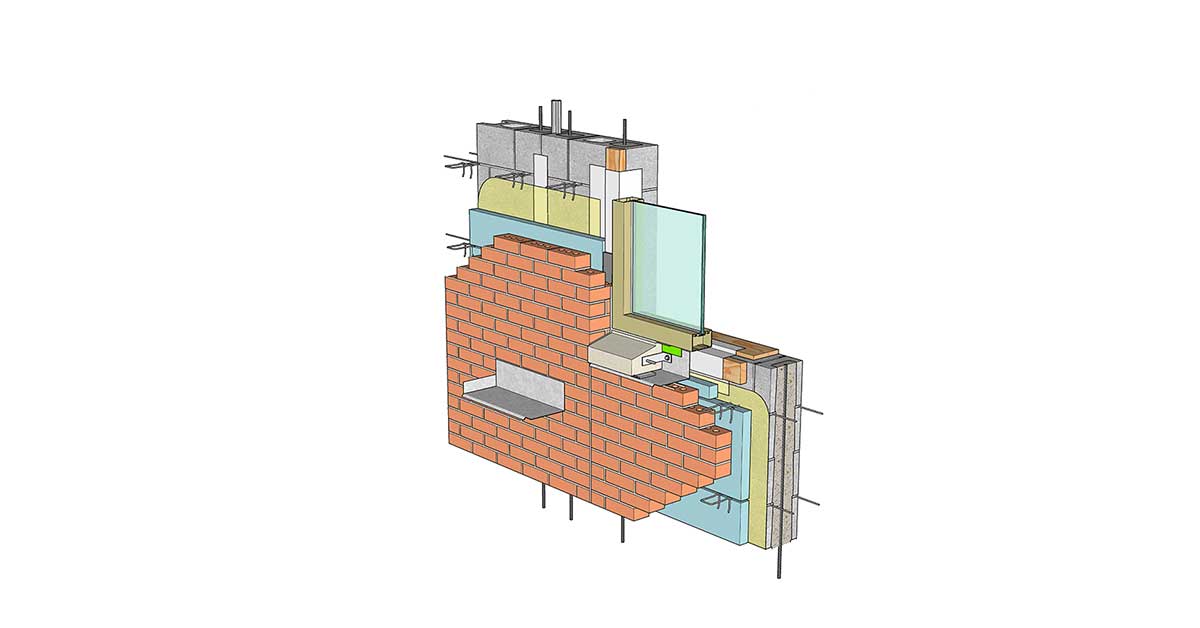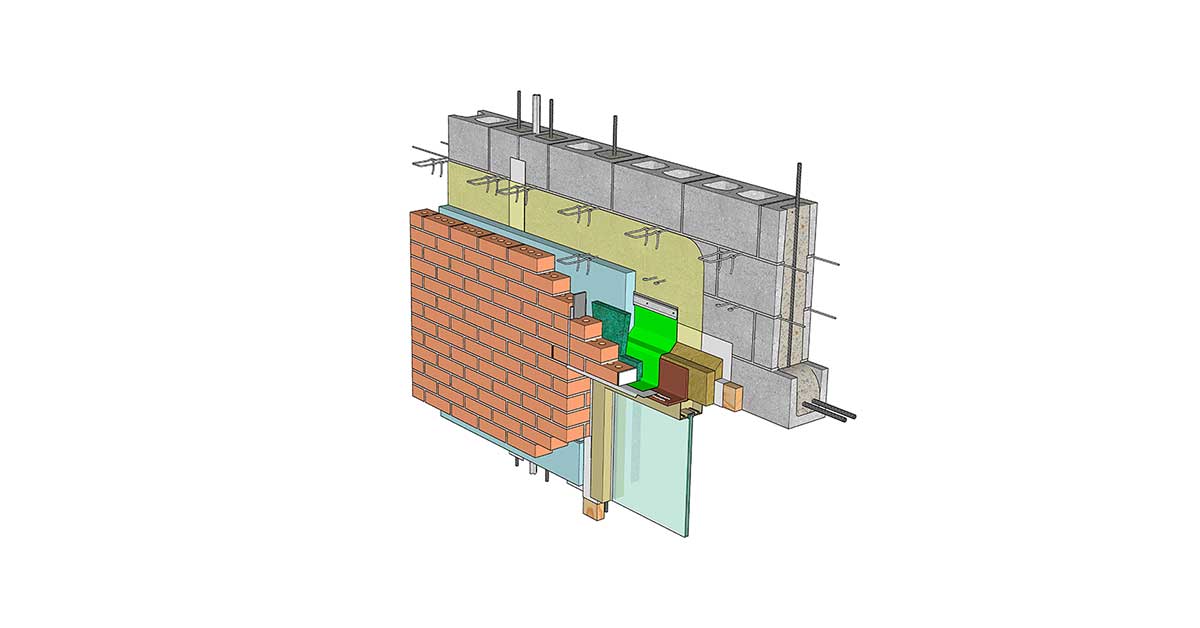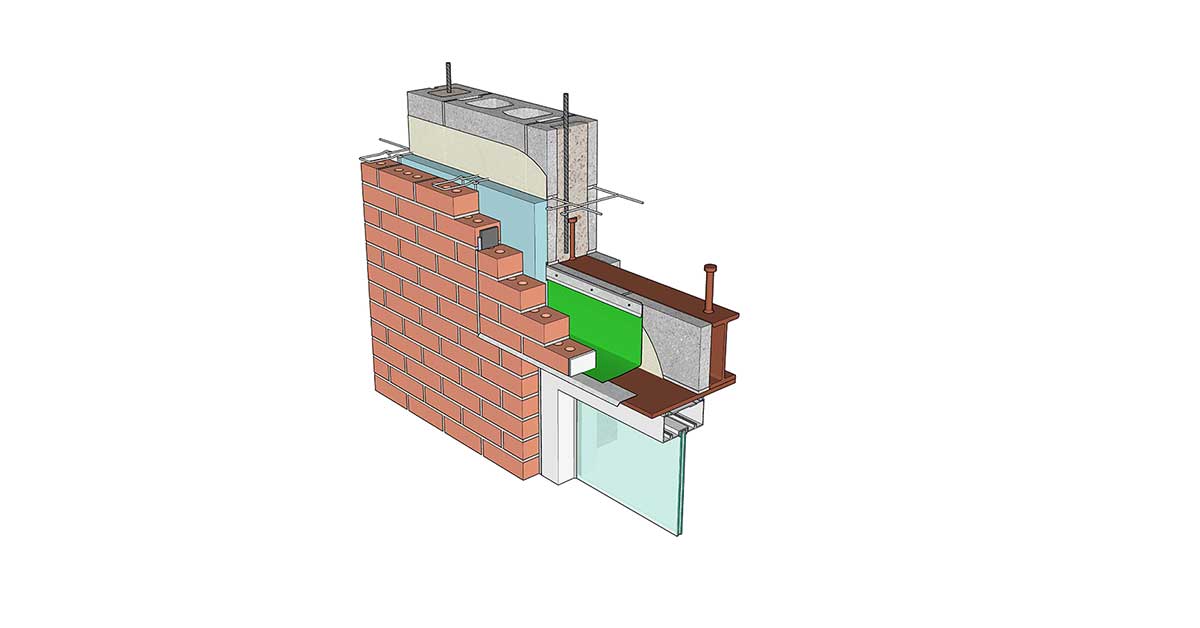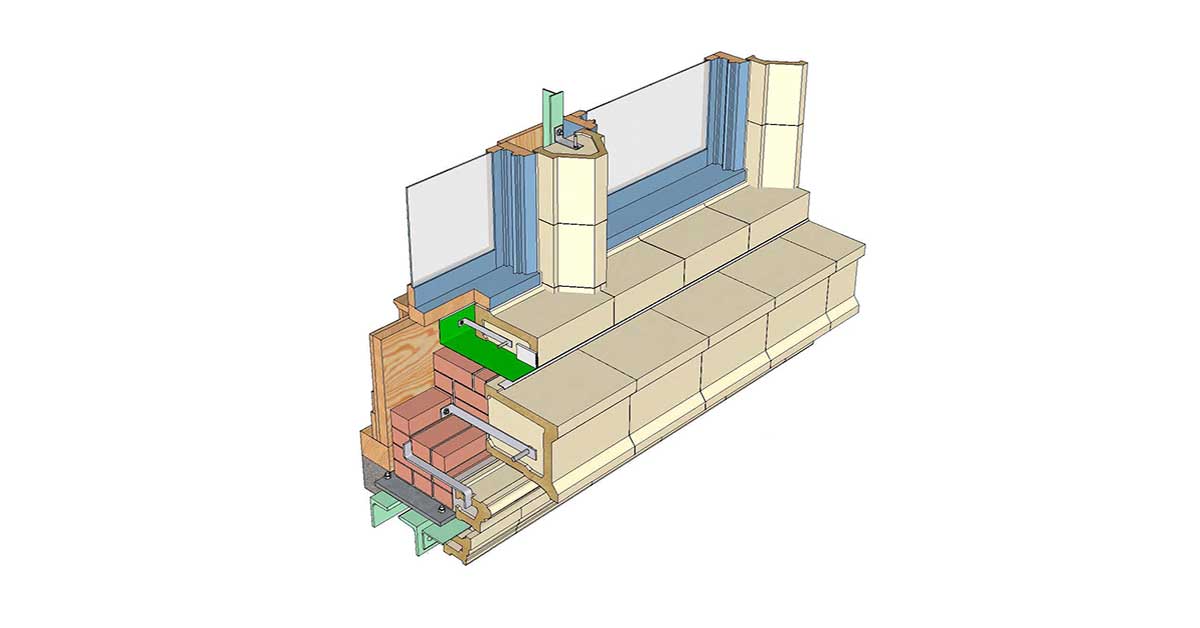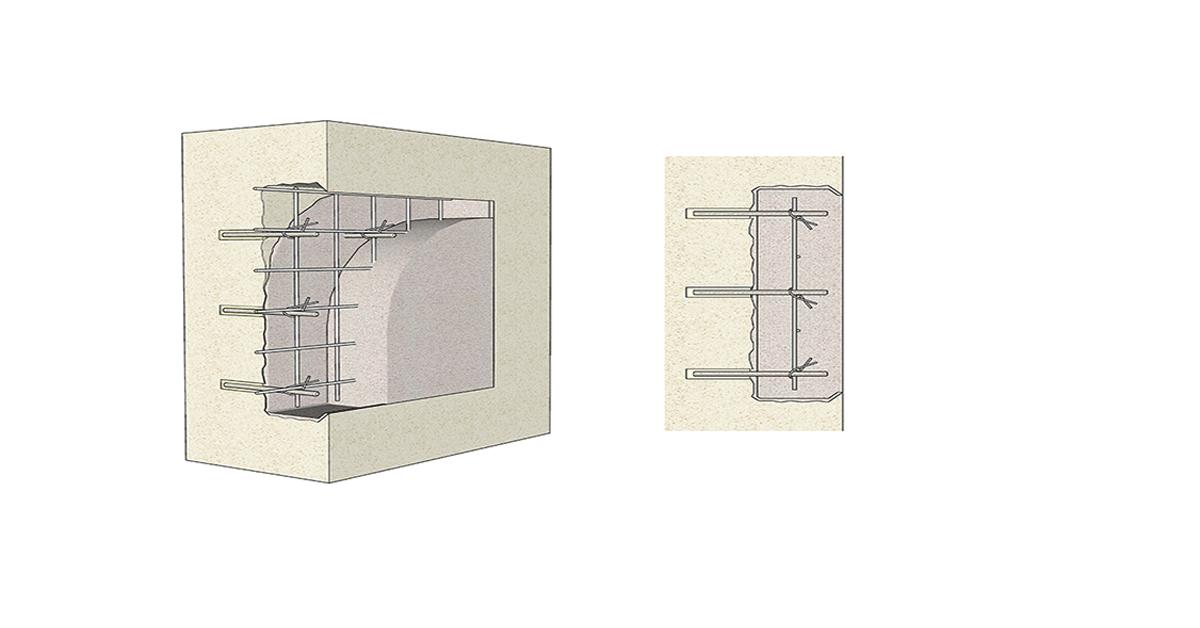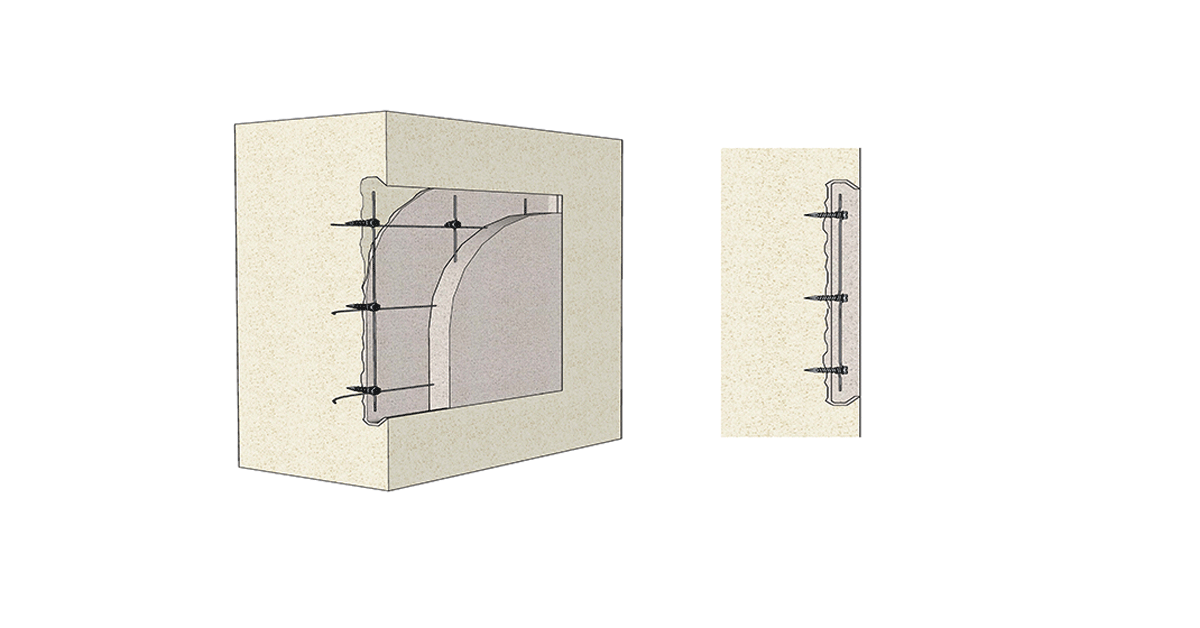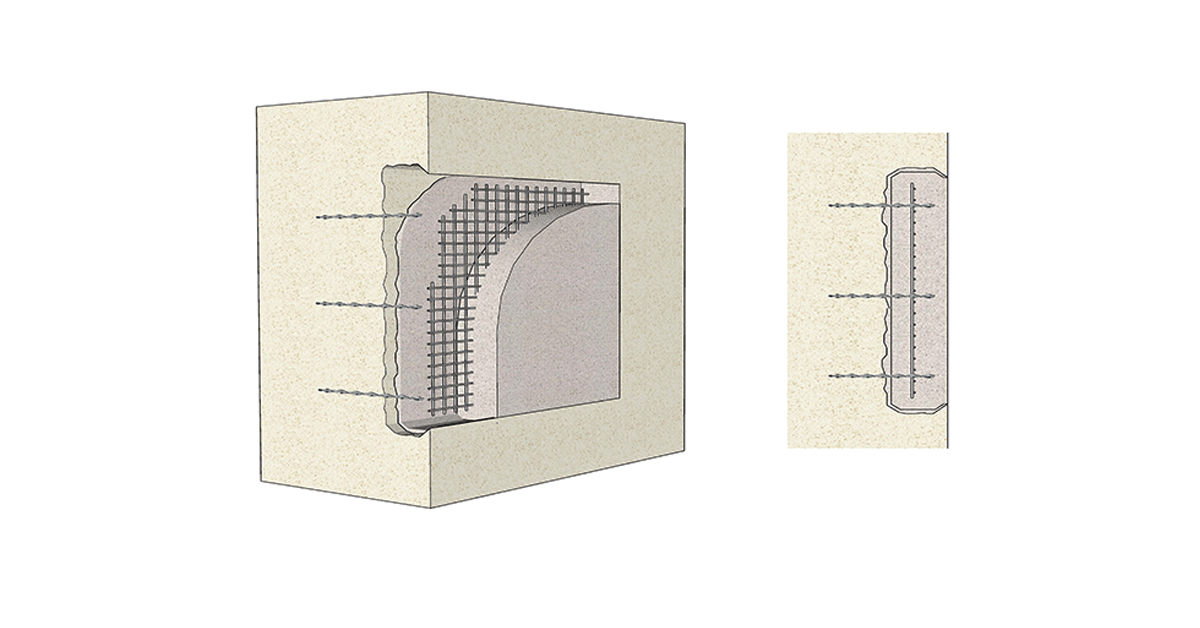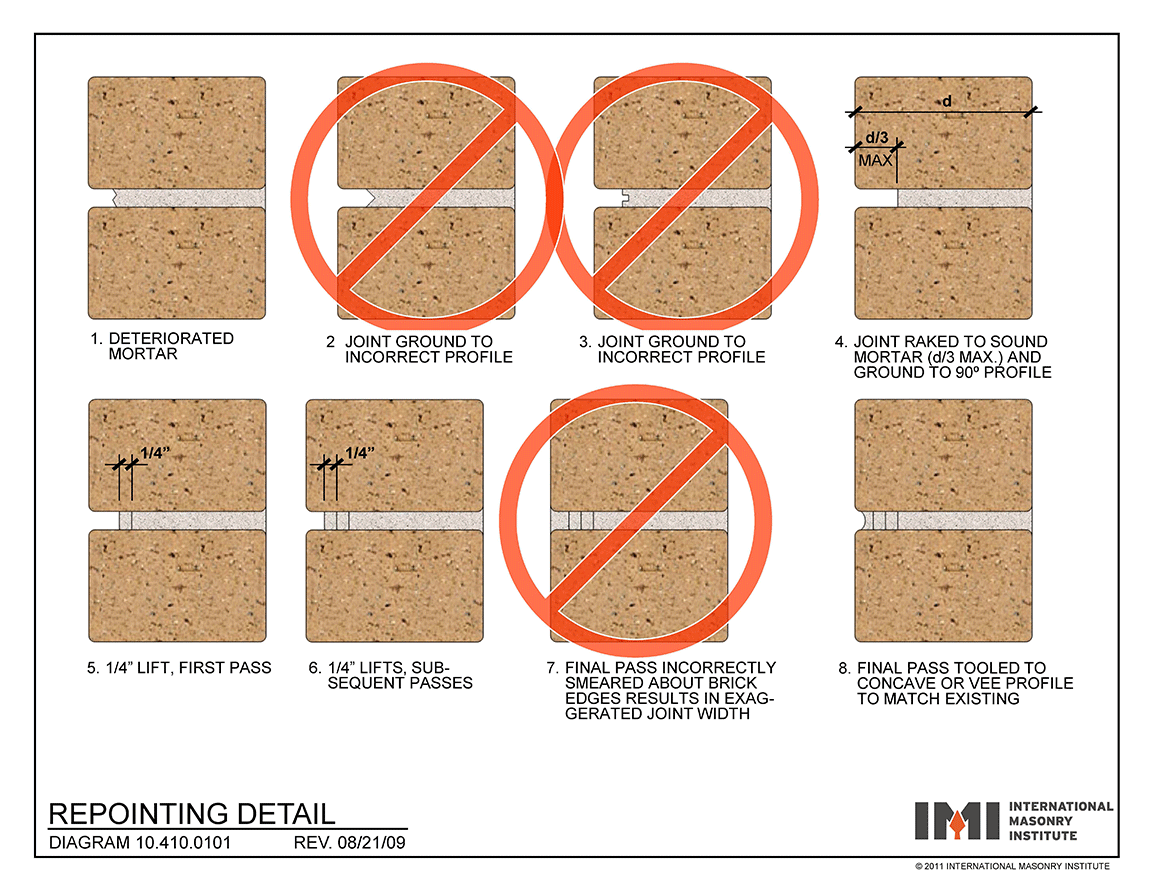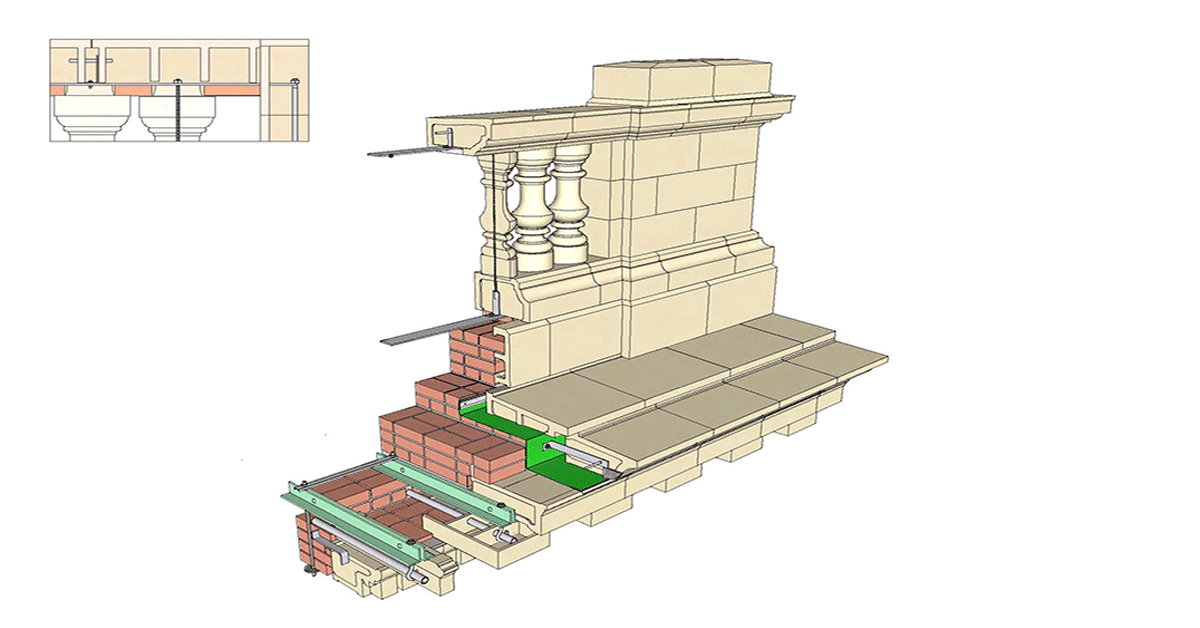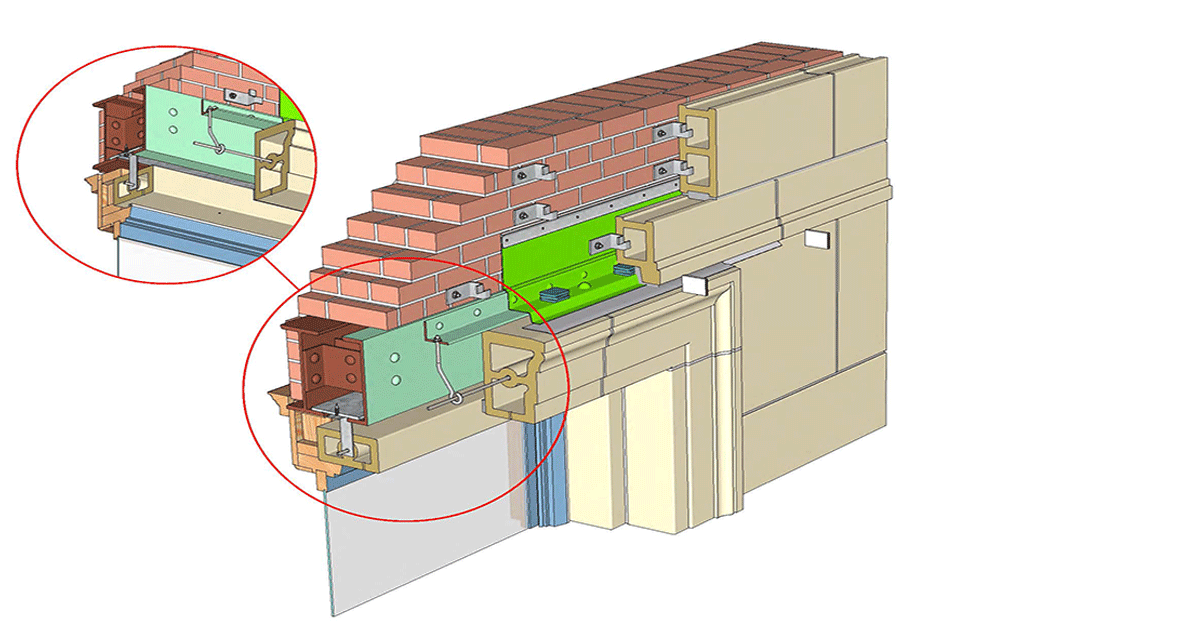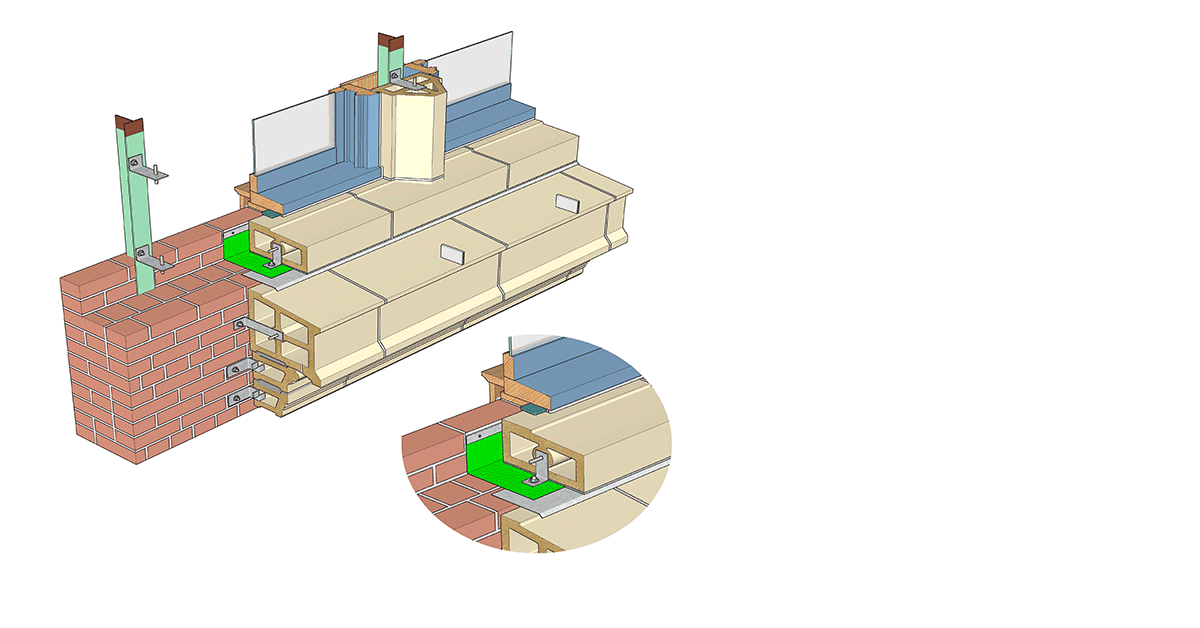Mortar joints make up about 20% of the masonry facade and are important both aesthetically and functionally. Mortar joints are a vehicle that allow further breathability and vapor transmission of wall assemblies.
It’s critical that new pointing mortars developed for a project aren’t stronger, denser, and less water absorbent than the original mortar or masonry materials. Selecting an appropriate and compatible new pointing mortar is one of the most important decisions to make for facade repairs and restoration projects. Facades with early manufactured masonry materials, like soft and porous brick or a soft and porous stone type, have an even more critical need for appropriate mortar selection.
It’s also important to note that new materials are often different from historic materials. Cement and cementitious materials undergo higher kiln temperatures and are typically ground more finely, which can lead to stronger and denser mixtures. Be sure to select cementitious materials, which are appropriate and compatible with the masonry units and system you are repointing. This could include various types of lime, portland cement, natural cement, and pozzolans/alternative cementitious materials, or combinations thereof.
Many masonry repair and restoration projects have a cleaning component that coincides with repair work. Cleaning treatment should use the gentlest methods possible to achieve the desired level of clean without harming the surface of the masonry materials. Damage to the surfaces creates more porosity, which leads to subsequent premature damage and lowers the wall’s durability.
Cleaning options include water, chemical, micro-abrasion, and laser. Prior to selecting a treatment approach, it’s critical to understand both the type of soiling and substrate material properties. Cleaning options aren’t all the same, and they have specific properties with pros and cons for various conditions and materials. Not cleaning is also an option.
See IMI’s Masonry Restoration Cleaning Flowchart for a guided approach to cleaning both conventional and historic masonry.
In general, coating systems should not be applied to existing or historic masonry facade surfaces. Even the most breathable penetrating water repellent coating systems are known for trapping moisture, changing the vapor drive of the wall, and causing premature failure of the masonry facade. If there is a historic or existing coating system already applied, then a comprehensive assessment of the condition of the coating and how well it’s bonded is necessary. The type of existing coating also needs to be determined by testing so that the new coating system is compatible. Adhesion testing during mockups and the duration of work should be required.
Many existing masonry buildings, specifically mass or transitional wall types in cold climates, look to improve energy efficiency by adding insulation to the interior of exterior walls. Before making this decision, consider these things to avoid future damage and diminished durability.
- Eliminate or minimize water infiltration by protecting horizontal surfaces. Improve vulnerable areas that water infiltrates by adding flashings (for example, window lintels and shelf angles), and repairing spalls, cracks, or exterior damage that allow excess water to enter. If water infiltration isn’t resolved, the masonry wall is already susceptible to moisture entrapment and freeze-thaw damage.
- Address any other water infiltration root causes of damage.
- Confirm coatings and water repellents haven’t been applied to the exterior surface, which may lead to heightened moisture entrapment and freeze-thaw damage.
- Evaluate the masonry materials and their properties – density, porosity, water absorption, vapor permeability, and saturation potential. This can be combined with a hygrothermal analysis to assess the risk of freeze-thaw damage.
- Understand the wall system make-up and impact of any embedded elements like steel and wood.
- Know the mechanical system, interior environment, and the exterior climate of the building.
- Understand how adding insulation may alter the relative humidity and dewpoint temperature of the wall. Pay particular attention to the continuity of the proposed plane of airtightness. Air leakage through insulated assemblies can significantly increase the risk of condensation. Vapor diffusion through the insulated assembly must also be assessed.
- Evaluate the various types of insulation available: closed cell, open cell, batt, sheet materials, spray-applied materials. You should also consider its placement in relation to the assembly and new or existing air/vapor/water barriers.
- If the insulation won’t be applied in direct contact with the interior masonry surface, determine how ventilation of any cavity between it and the interior wall face will be managed (such as with a dynamic buffer zone concept), to mitigate the potential for excessive moisture migration.
- Determine the optimum thickness of the insulation needed for the specific project to be successful.
- Work with a building envelope expert of historic and existing masonry buildings to model the performance of the proposed insulated wall system and determine if insulation will be effective without increasing the risk of damage to the existing masonry.
- Confirm the system design with insulation by conducting mockups and follow-up evaluation using hygrothermal simulation.
Refer to ASTM E3069: Standard Guide for Evaluation and Rehabilitation of Mass Masonry Walls for Changes to Thermal and Moisture Properties of the Wall and our resources at the bottom of this page for additional information.
The fire resistance rating of an existing masonry wall can be established in 2 ways:
- Listing of archaic assemblies as referenced by the International Existing Building Code (IEBC)
- By the equivalent thickness method, described in ACI 216.1/TMS 216 standard as referenced by the International Building Code (IBC)
The IEBC’s Resource A – Guidelines of Fire Ratings of Archaic Materials and Assemblies provides tables of documented fire ratings of various assemblies used in the past, including masonry materials and elements. It doesn’t specify the levels of fire performance required for building components, since that’s controlled by the building’s occupancy and use as set forth in local building codes.
ACI 216.1/TMS 216 Fire Resistance Rating for Concrete and Masonry Walls contains design and analytical procedures for determining the fire resistance of concrete and masonry members and building assemblies. It uses the equivalent thickness method, where the solidity of a unit is determined and then compared to tables that provide an equivalent fire resistance for that thickness. Combinations of different materials, air spaces, and wall finishes are addressed in this standard.

